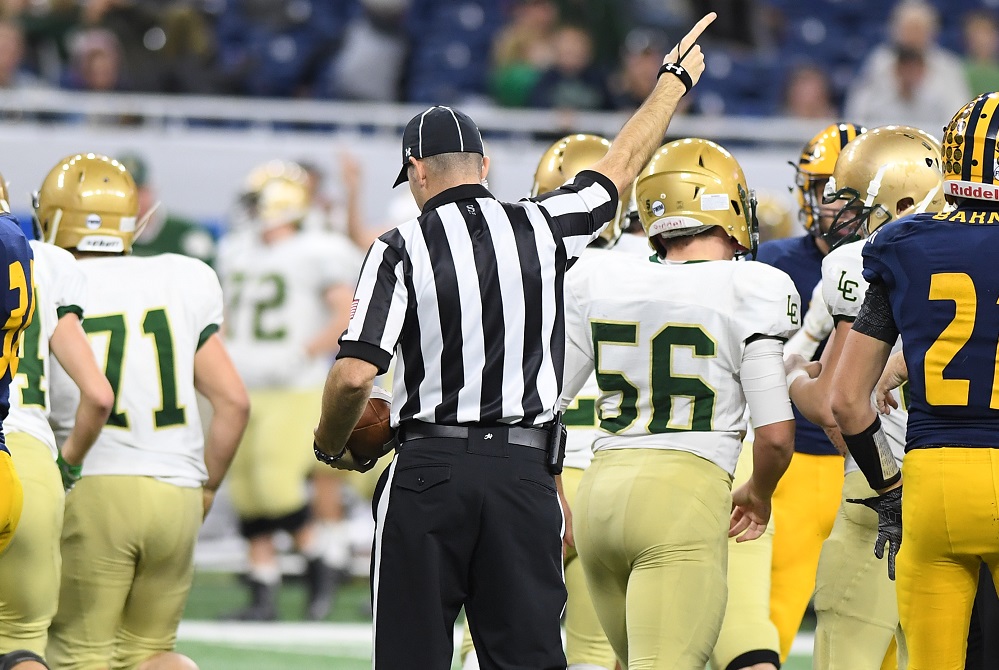
Be the Referee: Returning Kickoffs
September 22, 2016
Every football game starts with a kickoff, and our "You Make The Call" series will start with the same play for 2016.
Be The Referee is a series of short messages designed to help educate people on the rules of different sports, to help them better understand the art of officiating, and to recruit officials.
Below is this week's segment – You Make the Call: Returning Kickoffs - Listen
Every football game starts with a kickoff, and our 'You Make The Call' series will start with the same play for 2016.
The kicker kicks the ball high and deep off the tee, and the return man – three yards deep in his own end zone – catches the kick in the air, and now starts to head upfield to try and gain yards. Under high school rules, is the legal?
Believe it or not, the answer is no. Under high school rules, whether it’s a kickoff or a punt, once the ball breaks the plane of the goal line, the ball is dead and it becomes a touchback, with the offense taking over, first and 10, on the 20-yard line.
College and professional players can return kicks from the end zone; high school players cannot.
Past editions
Sept. 15: Concussions - Listen
Sept 8: Equipment Covering the Knees - Listen
Sept. 1: Play Clock Experiment - Listen
Aug. 25: Clipping in the Free Blocking Zone - Listen

Be the Referee: Pass Interference
By
Geoff Kimmerly
MHSAA.com senior editor
September 2, 2021
This week, MHSAA officials coordinator Sam Davis explains the differences in high school pass interference rules from those at the college and pro levels.
Be The Referee is a series of short messages designed to help educate people on the rules of different sports, to help them better understand the art of officiating, and to recruit officials.
Below is this week's segment – Pass Interference – Listen
One of the big differences between high school football and the college or pro game is how pass interference is called.
In high school, there is no such thing as an “uncatchable” pass. If there is illegal contact by the defender while the ball is in the air, that’s pass interference, no matter where the pass ultimately ends up.
Also – in high school – a defender can “face guard” as long as no contact is made with the receiver. That is not pass interference, even if the defender does not look back for the ball.
Both of those interpretations differ from the college and pro game. Both (of those) levels have an uncatchable exception, and neither allows for face guarding.
Keep that in mind the next time you think you’ve spotted pass interference at the high school level.
Previous editions
Aug. 26: Protocols and Mechanics – Listen

